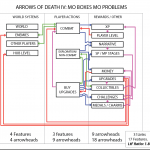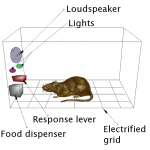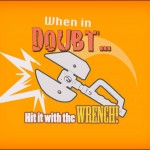Economy Balancing Models
When you have a game system that involves the player using loot to buy rewards, I usually start calling that system an "economy." (Note: This isn't how some people use the word,…
Chen Diagrams
This picture does not match the content around it. It is merely here to give the impression that this article is not all about words. Stupid words! In my fourth…
The Other Side
It was April, and things were still cold when I found myself in front of the offices of Insomniac Games' old offices, near Universal City Walk. I was on the…
Learning from other Media
About five years ago or so, I felt like I needed to improve my game design skills, so I looked around to see what kind of books there were out…
Telegraphs 2: Post-attack vulnerability
Previous Article | Next Article My post on telegraphing enemy attacks, was about making an enemy telegraph before it attacks to ask the question: "Can you avoid my attack?" This…
Reward Schedules
Carnival games are a great example of reward schedules. Since we've now established the best way to influence player behavior is via rewards, I want to talk about the ways…
Changing Player Behavior
previous article | next article One thing I need to do a lot as a game designer is come up with ways to get players to do what I want them…
A Morality Tale
This week I'm going to tell the story of how I learned one of the most important things I ever learned about game design: As a designer, it is not my job…
Enemy Attacks and Telegraphing
Intro Like most things when it comes to video game design, I think of enemies in terms of: The Questions the enemy is asking players The Tools I need to…
Trinity
Intro This is one in a series of blog posts/articles I’m writing to describe my game design methodology. In the first article, I named the system “Trinity” – but I…






